9+ Sample Logistics Proposals
-
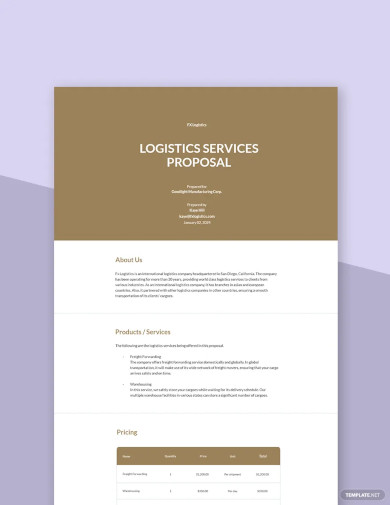
Logistics Services Proposal Template
download now -
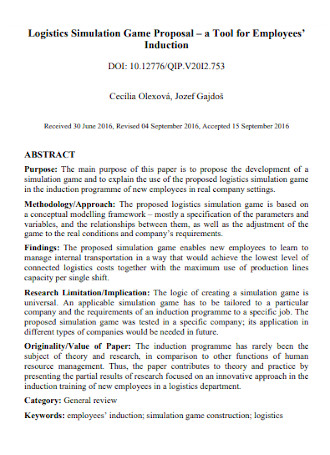
Logistics Project Proposal
download now -
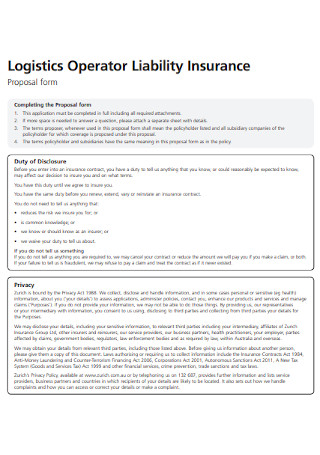
Logistics Liability Insurance Proposal
download now -
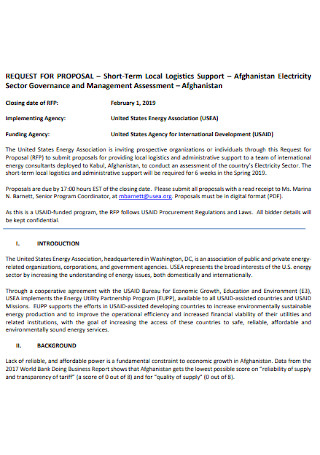
Local Logistics Transportation Proposal
download now -
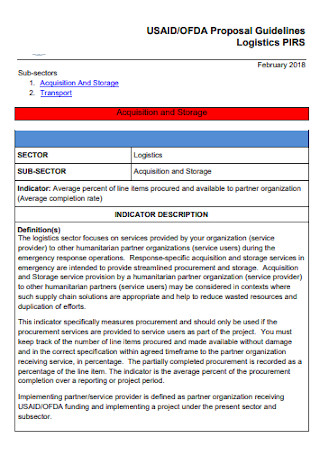
Sample Logistics Transport Business Proposal
download now -
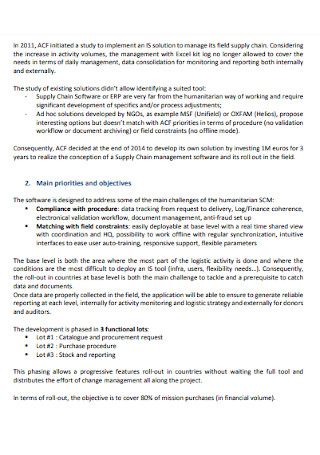
Logistic Delivery Service Proposal
download now -
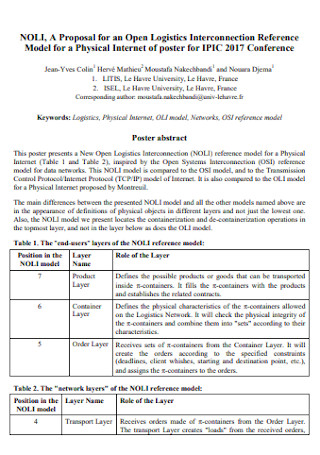
Standard Proposal for Logistics Trucking
download now -
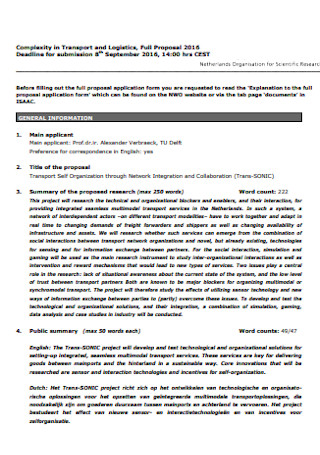
Logistics Transportation Services Proposal
download now -
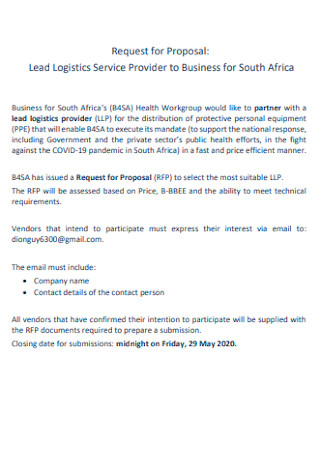
Logistics Business Trucking Services Proposal
download now -
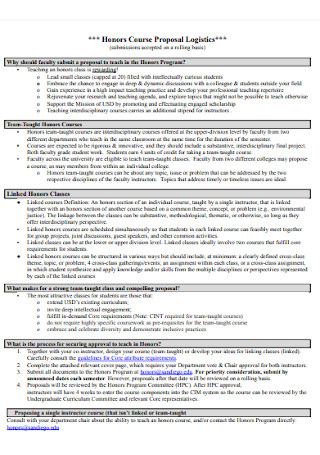
Party Logistics Proposal
download now
FREE Logistics Proposal s to Download
9+ Sample Logistics Proposals
What Is a Logistics Proposal?
How to Create a Logistics Proposal?
What are the Benefits of Hiring a Third-party Logistics?
FAQs
What is logistics?
What are the contents that you have to include in the logistics proposal?
What is the difference between a logistics proposal and a logistics business plan?
What are the 3 types of logistics proposals?
What Is a Logistics Proposal?
While a logistics department can be done in-house, many businesses, especially startups or small-scale businesses, prefer hiring the services of a third-party logistics firm to deliver certain items for many reasons. To gain clients and revenue, a logistics company has to provide logistics proposals or logistics business proposals, which often come after executing the marketing plan. A logistics proposal is a document that a logistics company uses to convince a potential client to avail of their transportation services and other logistic services.
How to Create a Logistics Proposal?
Logistics plays an important role in almost all industries. As long as these industries have something to transport, the logistics industry can continuously grow. Currently, most industries are going up. For instance, according to statistics posted by M. Ridder in Statista, 2018’s global market of the cosmetics industry has been 5.5% higher than the previous year. Needless to say, logistics companies are needed to deliver their products to other sides of the world. However, if you are a logistics firm owner or manager, you will need to create a logistics proposal before you can give this kind of service, which you are going to learn by reading further.
Step 1: Create a Title Page and a Table of Contents
In this step, introduce yourself and your business. It means that you have to gather basic information about you and your business. A few of these details include your name, your company’s name, the client’s name, and the date you submitted the logistics proposal. In creating this part of the proposal, it is best to set a professional tone. Also, make it appealing to read. Your goal is to convince them to make an appointment with them. How can you make it happen if you can’t even catch their attention?
Business proposals, such as business partnership proposals and logistics proposals, can be quite long. Unfortunately, industrial business leaders can be too busy to consider reading your entire proposal. They will most likely read only a certain part of the paper. If they find it worthy of considering, they may read the entire document or maybe not. So, it is best to create a Table of Contents that will allow them to know the things that the entire proposal is covering. Providing this part of the proposal allows them to skip to the most interesting part for them. To make your proposal more interactive and convenient to use, sending the document to them electronically will make it happen as you will have an option to allow the reader of your proposal to make the items in the Table of Contents clickable. It means that they will be redirected to the actual page and start reading right away.
Step 2: Craft your Executive Summary
In this step, you are going to explain why you are sending a proposal. An Executive Summary should be thought out carefully because if they conclude that your reasons for proposing are not convincing enough, your proposal goes directly to the trash. Thus, make your research first and list down the benefits that the industrial firm can enjoy by partnering with your firm. You don’t have to write detailed content but you will have to provide a brief yet specific idea of how your services can benefit their business.
Step 3: State the Problem You are Addressing
With the research that you have made for this proposal, you should be able to come up with the industrial business problems to solve. How else can you come up with the benefits if you don’t discover the problems to address? More often than not, the research that you are going to conduct can be a tedious one. However, it will be worth it, especially if we are talking about winning a billion-dollar contract.
Step 4: Prepare a Solution
Now that you have the problem that needs to be addressed, the next step that you need to take is to create a solution for the problem. In the nutshell, the solution that you are going to write will be most likely connected to the benefits that your clients can get. However, in this part, just like writing a detailed solution for a math problem, you are going to state the strategies that you are going to use to solve the problem or get the benefits that you promised. One of the worst mistakes that some logistics companies do is providing a generic solution. An industrial business leader can easily sense it. Thus, make sure to customize every logistics proposal you write in a way that will match only the needs of the company.
Step 5: Don’t Forget to Enclose your Qualifications
One thing that you should know is business leaders don’t just entrust the fate of their business to anyone. You will have to prove your worth, which you are going to do by including your qualifications of providing a solution to a business problem. Include the previous projects that you worked with. Doing so will prove to them that you have solved several problems in the industry. You have garnered the necessary experience and knowledge to serve them well.
Step 6: State the Pricing, Terms, and Conditions
At this point, you have already solved the problem but at what cost for the industry business? This step can get tricky. You don’t want to surprise your clients with an expensive price. Strategize your pricing scheme. Offer package options that the client can choose from. Doing so gives the clients an impression that you are not holding them in the neck. Certain adjustments may have to be made during the negotiation but you can anticipate that. Preparing for this part ensures that you don’t get into a deal that will cost you a fortune or losing the deal itself. Along with the pricing, you’ll have to state the terms and conditions. This part will make sense of the pricing that you have discussed. You will have to state the timeline of the project and the schedule of the payments. The rule of thumb is to make it clear.
What are the Benefits of Hiring a Third-party Logistics?
Undeniably, these days, industrial management dominates the global economy. Of course, part of the process of making it happen is the logistics, which third-party logistics (3PL) takes part in. In 2018 alone, the market for third-party logistics (3PL) worldwide reaches an economic value of 931 billion USD. The services that the industry is providing involve offering tailor-made solutions for distribution, storage, and operational system. That being said, there are reasons why industrial companies resort to third-party logistics to complete their supply chain network and you are going to know them in this section.
FAQs
What is logistics?
In general, Logistics is a complex process in business management that deals with the movement of the resources, such as equipment, supplies, food, raw materials, and other tangible items that a business utilizes for different purposes. This process plays a vital role in supply chain management because it helps meet the needs of the customers. How? Handled by a logistician, logistics management deals with the planning, implementation, and control of the forward and reverse flow of the goods and even the services. These goods and services move between the point of origin and the point of consumption. Modern logistics involve the use of simulation software to efficiently model, analyze, visualize, and optimize the complexity of logistics. According to a statistic posted in Statista on November 15, 2019 by E. Mazaeanu, the size of the global logistics market in 2018 was worth 5.5 trillion euros with road freight as the largest segment, covering more or less 1.8 trillion euros.
What are the contents that you have to include in the logistics proposal?
Depending on what type of proposal you are going to create, a basic logistics proposal should at least include a title or cover page, executive summary, acknowledgment of the problem, proposed solution, deliverables, timeline, pricing, information about the company, case studies, terms, and conditions, and the last but not the least is how to proceed. For some important reasons, logistics firms also opt to include the table of contents and testimonials in their proposal.
What is the difference between a logistics proposal and a logistics business plan?
Before you read this article, you may have thought that logistics proposals and logistics business plans are the same but they are not. They may be similar in some ways but in general, they differ from each other. For one, a logistics proposal intends to win clients. In other words, when you write a logistics proposal, you are selling your services. On the other hand, just like other business plans, a logistics business plan allows you to win investors.
If it is still not clear to you, the logistics proposal focuses on what you can offer to the client. You will talk about the strategy that you will apply to solve the problem of the client alone. Meanwhile, with a logistics business plan, just like with a jewelry business plan, you will talk about the details of the strategy for your business to grow. This document is usually used when you are about to get a loan from the bank or, as we have mentioned earlier, win some investors.
What are the 3 types of logistics proposals?
- Formally solicited logistics proposal – While it is true that a logistics proposal has to be created to win the clients, in some cases, they will be the ones to approach you first via a business proposal. However, it does not mean that you have won the business deal. Chances are they are also sending the same documents to other logistics companies. Nonetheless, you have got their attention. They are sending you their requirements. Now, get a grip and make them a great offer through a formally solicited logistics proposal.
- Informally solicited logistics proposal – Informally solicited logistics proposal is almost the same as the formally solicited logistics proposal. In this type of proposal, however, you are aware that potential clients are interested in the services that you offer. However, in this case, they are not sending you a business proposal. Thus, to win a contract, you will have to take an additional task in the process, which is to research. Just like the formally solicited logistics proposal, however, you are going to send it to the prospective client and they will evaluate if they will accept the offer.
- Unsolicited logistics proposal – Earlier, we have discussed that to create a logistics proposal, it has to be tailored to match the needs of the client. Nonetheless, in some cases, you can create a more generic proposal. This type of proposal may not address the entire problem of the prospective client, though. Thus, it is not 100% effective but, if you make the effort to conduct market research, you may be able to personalize the proposal in a way that would fit the problems of a wide market. Doing so, however, may need you to create a market research proposal.
Indeed, creating a logistics proposal is crucial in doing business. It is a way for businesses like a logistics firm to gain more clients along with the business and marketing plan. Through a marketing plan, a business can attract customers. Nonetheless, they are not obliged to avail of the services that a business offers. They’ll have to be hooked with details about what a business can offer for them, which you can do through a logistics proposal. With the things that you have learned here, you don’t have to proceed with this step without the basic knowledge, which is necessary before you get proficient in creating one.
